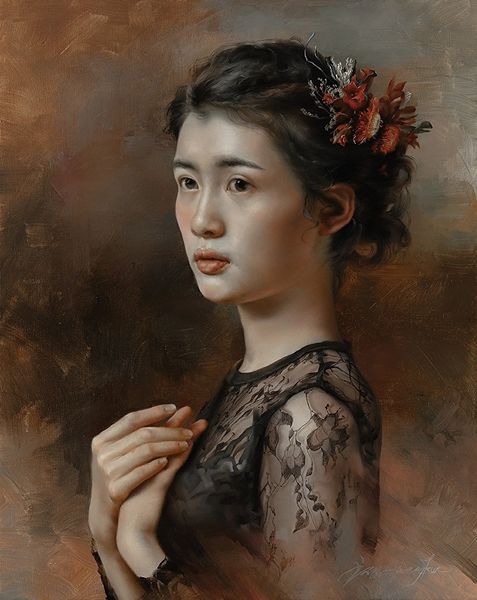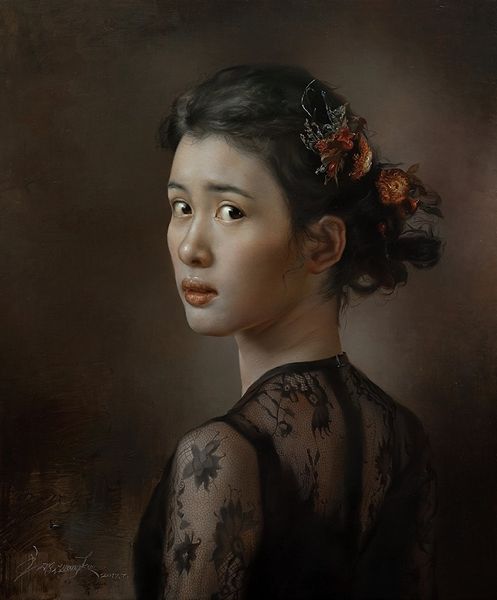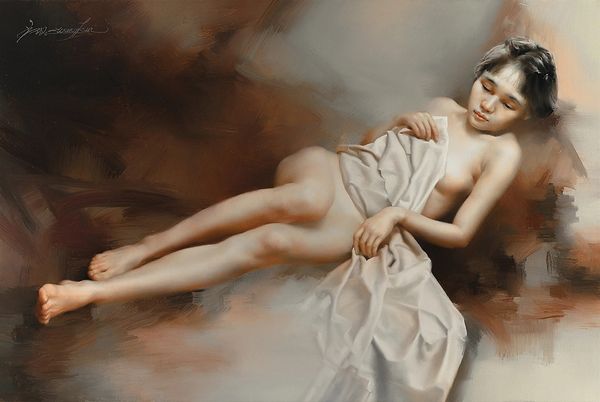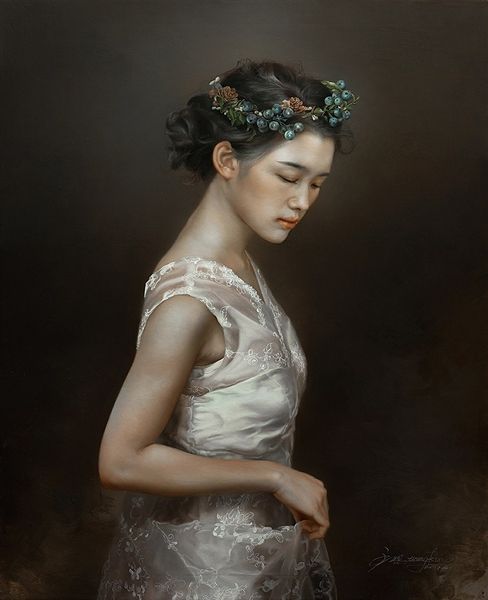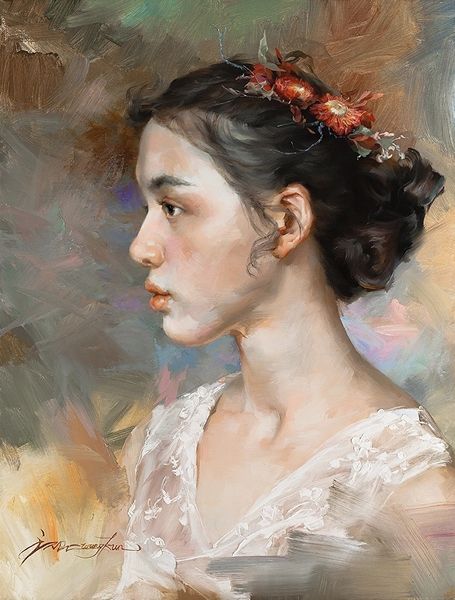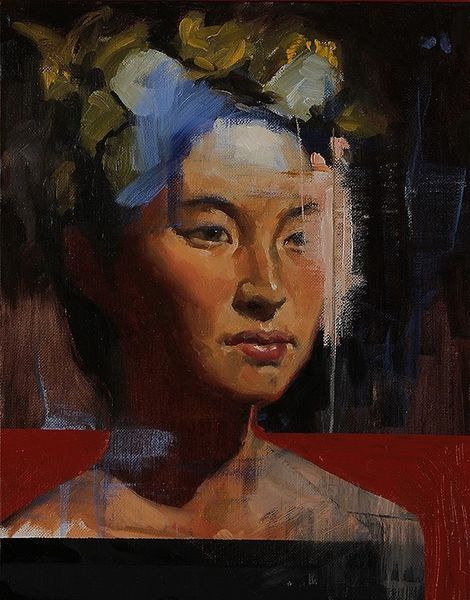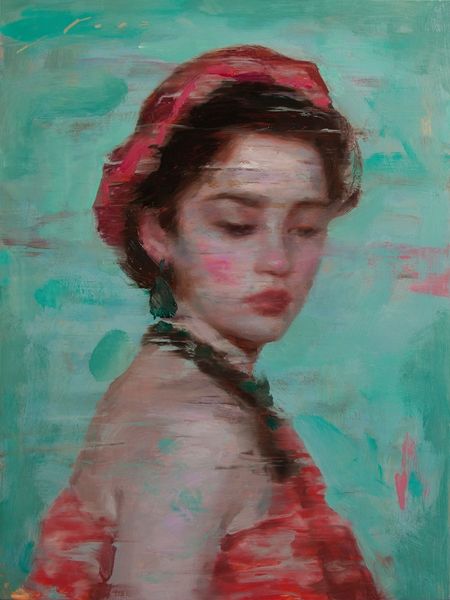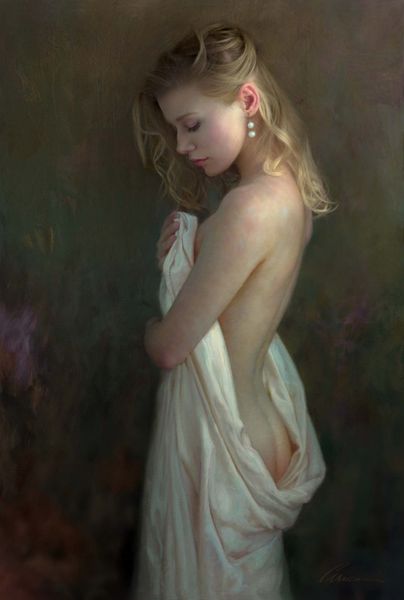
painting, oil-paint
#
portrait
#
figurative
#
facial expression drawing
#
character portrait
#
painting
#
oil-paint
#
portrait reference
#
portrait head and shoulder
#
intimism
#
animal portrait
#
animal drawing portrait
#
portrait drawing
#
facial portrait
#
nude
#
portrait art
#
realism
#
digital portrait
Copyright: Modern Artists: Artvee
Kun Wang's oil painting presents a woman, adorned with a floral headscarf, her gaze turned inward. This head covering, blooming with botanical motifs, speaks of modesty, yet it echoes a lineage far beyond mere adornment. Consider the veils of Renaissance Madonnas or the turbans of Persian miniatures. They re-emerge here, transcending religious or cultural specificity. In the ancient world, head coverings symbolized status and piety. Over time, their significance has ebbed and flowed. The headscarf, historically a marker of respect, in this painting cloaks the woman’s thoughts, inviting contemplation. The gesture of her embrace mirrors the Venus Pudica—a pose of modesty. What is it that she conceals? Perhaps not the body, but a deeper, more intimate vulnerability. It’s a visual language of the soul, one that transcends the immediate moment, engaging us on a subconscious level. This evolution, a kind of palimpsest of meaning, shows how potent symbols are constantly shifting in meaning, reminding us of the cyclical nature of cultural memory.
Comments
No comments
Be the first to comment and join the conversation on the ultimate creative platform.


